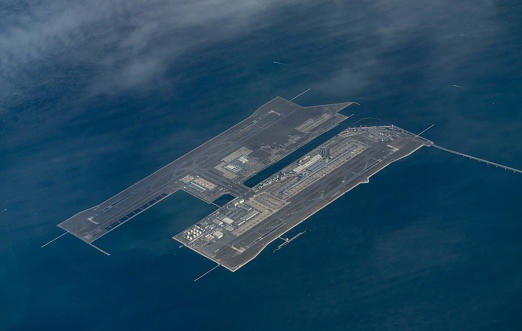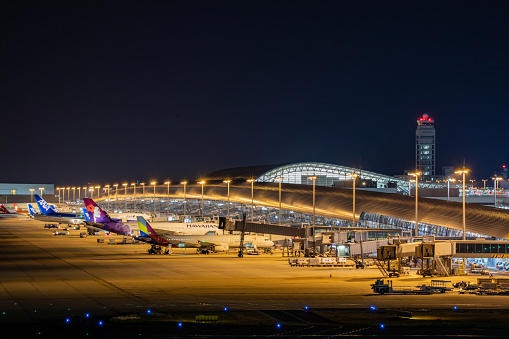Kansai International Airport in Japan is a major travel hub which serves some of the country’s biggest cities and plays host to millions of passengers a year. Yet there’s a problem.

The airport was welcomed when it first opened in 1994 as a solution to overcrowding at the nearest airport in Osaka – but just 30 years later it’s slowly sinking into the sea. And it’s doing so at such an alarming rate experts have suggested it could be underwater within 30 years.
Kansai came about after it was decided that the region was losing out on trade to Tokyo, and therefore needed a bigger airport.
With the existing local airport – Osaka International – surrounded by densely populated suburbs and unable to expand, two artificial islands were created in Osaka Bay to house the new site, with these linked to Rinku Town in Osaka by a connecting bridge over the water.
Work on this began in 1987 – with Kansai International opening seven years later.
The airport – which serves as a hub for major airlines including All Nippon, Japan Airlines and Nippon Cargo, as well as the low-cost Japanese airline Peach – has survived natural disasters over the ensuing decades and emerged relatively unscathed.
As well as making it through the Great Hanshin earthquake of 1995, it was also hit by a typhoon in 2018 which sent seawater cascading onto the runways.
A few days after the disaster a tanker crashed into the bridge connecting the airport to the mainland, leaving passengers stranded. However, it survived and continued to operate.
Yet the rush to save it is on as it slowly submerges – with the building having sunk 38 feet since it was built.


